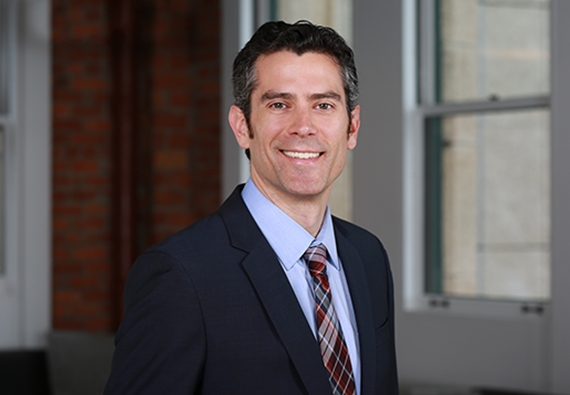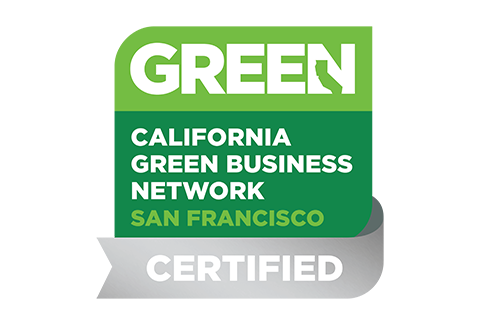Mediated Agreements and Magic Words: Admissibility of Mediated Settlements of California State Law Claims in Federal Court
Does federal common law govern admissibility in federal court of a written agreement reached during mediation that resolves both California and federal law claims, even when only state law claims remain pending at the time of enforcement of the agreement? In a precedential but split panel decision earlier this month, the Ninth Circuit held that it does. The issue is significant. The district court had ruled the settlement agreement inadmissible for failure to use the magic words required by the California Evidence Code. The panel reversed and remanded.
In In re TFT-LCD (Flat Panel) Antitrust Litig., --- F.3d ---, No. 14-15916, 2016 WL 4547357 (9th Cir. Sept. 1, 2016), the plaintiff, Sony, and the defendant, HannStar, had mediated before a very experienced and highly regarded mediator, in the hopes of resolving antitrust claims that Sony was about to file against HannStar. On the day before the complaint was to be filed, the mediator sent an email to each side with a mediator’s proposal (i.e., a settlement proposal that he believed was most likely to be accepted by the parties). The email, quoted extensively by the Ninth Circuit panel, carefully explained the “double-blind” nature of the mediator’s proposal (neither party would know whether the other had accepted the proposal unless both accepted) and concluded “if both sides accept the Mediator’s Proposal, I will inform you immediately that the matter is settled.” After each side separately emailed their acceptance, the mediator announced, “This case is now settled subject to agreement on terms and conditions in a written settlement document.”
A month later, HannStar informed Sony that it would not pay the amount contained in the mediator’s proposal. Sony filed a lawsuit in federal district court alleging federal and state antitrust claims and breach of contract for HannStar’s alleged reneging on the settlement agreement. Ultimately Sony dismissed its antitrust claims against HannStar, leaving only its state law breach of settlement contract claim. It filed a motion for summary judgment to enforce the settlement agreement, but the district court denied the motion because the strict provisions of the California Evidence Code barred introduction of the e-mails that Sony contended constituted the settlement agreement. In re TFT-LCD (Flat Panel) Antitrust Litig., No. C 12-02214 SI, 2013 WL 6326707, at *3-*4 (N.D. Cal. Dec. 3, 2013).
The district court held that the California Evidence Code (Section 1115, et seq.) and California Supreme Court precedent prohibited the admission of a statement or document made pursuant to mediation unless it “falls squarely within an express statutory exception to mediation confidentiality.” Id. at *2 (citing Foxgate Homeowners' Ass'n v. Bramalea Cal., Inc., 26 Cal.4th 1, 14 (2001) and Cassel v. Superior Court, 51 Cal.4th 113, 118 (2011)). The district court considered the exceptions enumerated in Section 1123 of the California Evidence Code, and specifically subsection (b), which allows admission of a written settlement agreement when “[t]he agreement provides that it is enforceable or binding or words to that effect.” Id. at *3. “Thus, a written settlement agreement arrived at through mediation is only admissible if it ‘include[s] a statement that it is “enforceable” or “binding” or a declaration in other terms with the same meaning.’” Id. (quoting Fair v. Bakhtiari, 40 Cal.4th 189, 199-200 (2006). “[B]ecause the e-mails do not affirmatively provide that the agreement the parties reached is enforceable or binding, the purported settlement agreement is inadmissible.” Id.
The Ninth Circuit did not disturb the district court’s decision that this was the correct result under California law. Rather, the Ninth Circuit held that California privilege law did not apply to the admissibility of the emails; the federal common law of privilege did. 2016 WL 4547357, at *3. Although, under Federal Rule of Evidence 501 “in a civil case, state law governs privilege regarding a claim or defense for which state law supplies the rule of decision,” “where the same evidence relates to both federal and state law claims” “federal privilege law governs.” Id. Over a dissent by U.S. District Judge Barbara Lynn, the panel majority reasoned that even though at the time Sony sought to introduce the emails it had dismissed its federal antitrust claims and only its state law claim remained pending, “at the time the parties engaged in mediation, their negotiations concerned (and the mediated settlement settled) both federal and state law claims, [and thus] the federal law of privilege applies.” Id. at *3.
And so what result under federal privilege law? The Ninth Circuit does not say, and to our knowledge neither it, nor any other federal circuit court, has squarely held that there exists a federal privilege protecting mediation communications. While the Ninth Circuit panel relied heavily on Wilcox v. Arpaio 753 F.3d 872 (9th Circuit 2014) for its statement that federal privilege law controls, the Wilcox decision held that the party relying on federal law had “waived any argument that the contested evidence should be privileged under federal law.” The Wilcox court did not determine whether or not federal law recognizes a mediation privilege. Both the Ninth and the Fourth Circuits have previously expressly declined to consider whether such a privilege exists. Babasa v. Lenscrafters, Inc., 498 F.3d 972, 975 n.1 (9th Cir. 2007); In re Anonymous, 283 F.3d 627, 639 (4th Cir. 2002). The Fifth Circuit has specifically refused to infer the existence of a mediation privilege from a federal statute making mediation proceedings conducted under it confidential. See In re Grand Jury Subpoena Dated December 17, 1996, 148 F.3d 487, 493 (5th Cir. 1998). But there is a split of authority at the district court level as to whether such a federal mediation privilege exists. Two decisions from the Central District of California offer differing views on the issue. Compare Folb v. Motion Picture Indus. Pension & Health Plans, 16 F. Supp. 2d 1164, 1179-80 (C.D. Cal. 1998), aff’d, 216 F.3d 1082 (9th Cir. 2000) (holding that “it is appropriate, in light of reason and experience, to adopt a federal mediation privilege applicable to all communications made in conjunction with a formal mediation”) with Molina v. Lexmark Int’l, Inc., 2008 WL 4447678, at *9 (C.D. Cal. Sept. 30, 2008) (“The existence of a federal common law mediation privilege is not nearly as well established as [the defendant] suggests it is.”).
Presumably, the In re TFT-LCD panel majority assumed that application of federal privilege law may lead to a different outcome than that reached under California law. But it left the district court to decide that question in the first instance. Perhaps the district court will do so, and the losing party will appeal that decision to squarely place the question of a federal mediation privilege before the Ninth Circuit. It is also possible, of course, that the parties will choose to settle, perhaps with the aid of a mediator. Stay tuned.
Use the Magic Words
The immediate lesson for mediators and litigators practicing in California state and federal courts is to use the “magic words” if they want to be able to enforce under California law settlement agreements reached during mediation. The district court had concluded: “It is not enough that the parties intended, at the time of contract formation, to be bound by the settlement terms. Without taking the extra step of including a statement to the effect that the settlement is intended to be enforceable or binding, it is not admissible under section 1123(b)” of the California Evidence Code. 2013 WL 6326707, at *3 (citing Fair, 40 Cal.4th at 199). Any resolution reached during mediation should be reduced to writing, and to be enforceable in court, “the writing must make clear that it reflects an agreement and is not simply a memorandum of terms for inclusion in a future agreement. … [I]t must be signed by the parties and include a direct statement to the effect that it is enforceable or binding.” Fair, 40 Cal. 4th at 192.
In this case, the mediator announced the parties’ acceptance of his mediator’s proposal with this statement: “This case is now settled subject to agreement on terms and conditions in a written settlement document.” The “subject to” condition may indicate that the parties did not intend the mediator’s proposal procedure to achieve a final and binding agreement. Then again, what good is an acceptance of a non-binding proposal? It seems that this unfortunate situation might have been avoided – at least under California law – had the mediator’s proposal included language that, should the parties accept the proposal, it will be a final and binding agreement, and the written communications admissible to prove the existence of the agreement. Litigators and mediators should be on the lookout for such language the next time you mediate.


